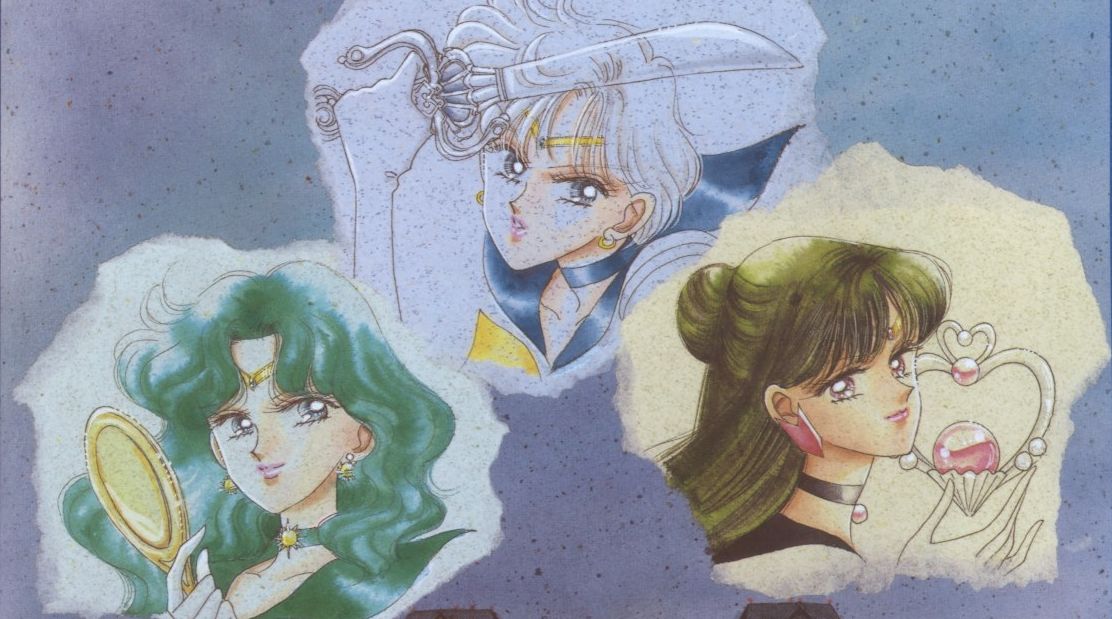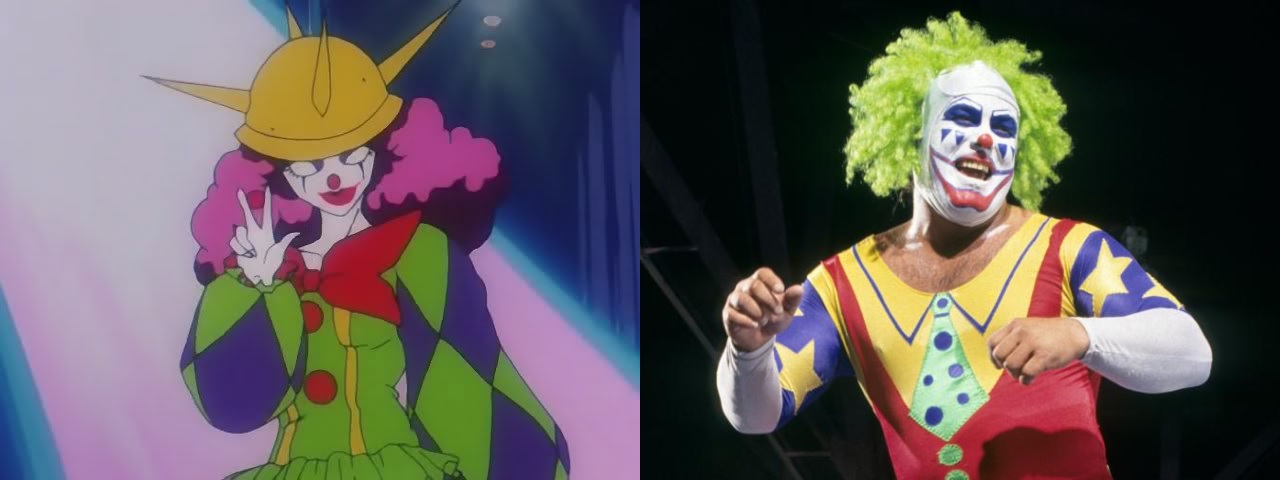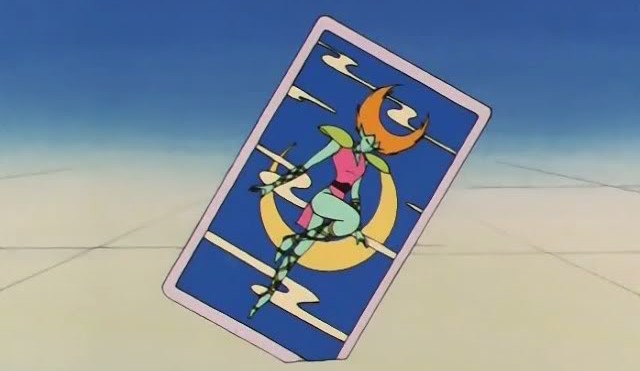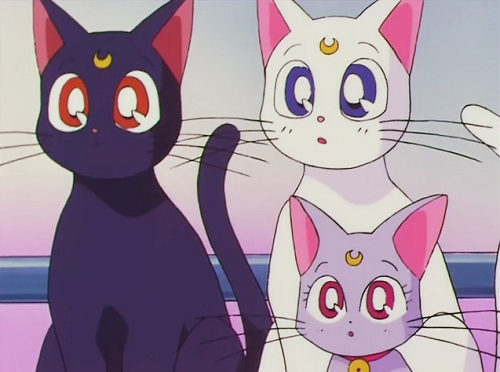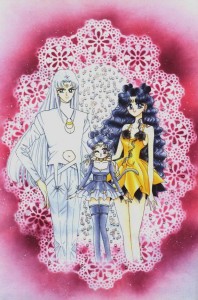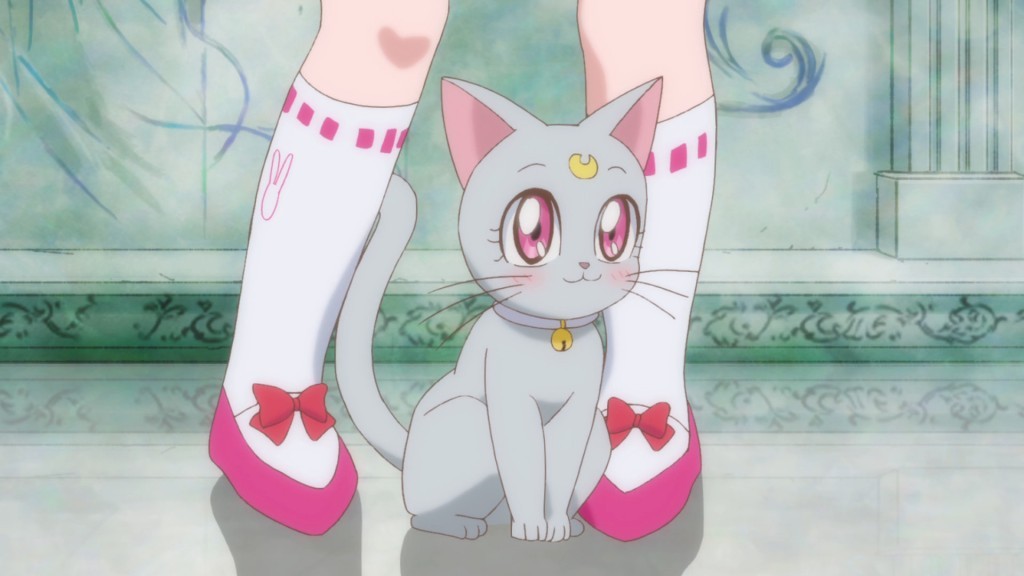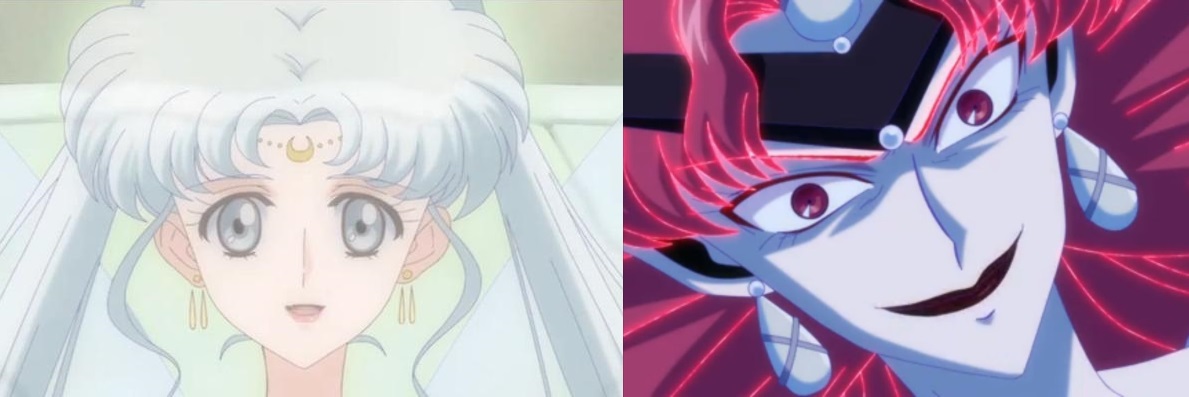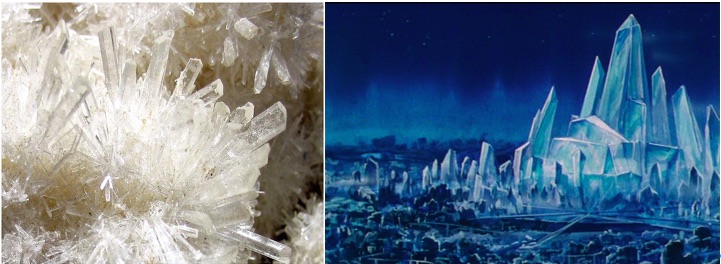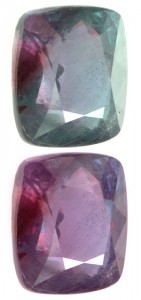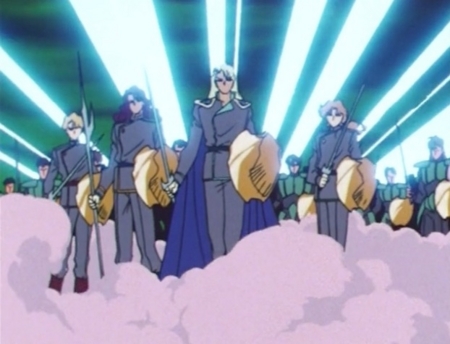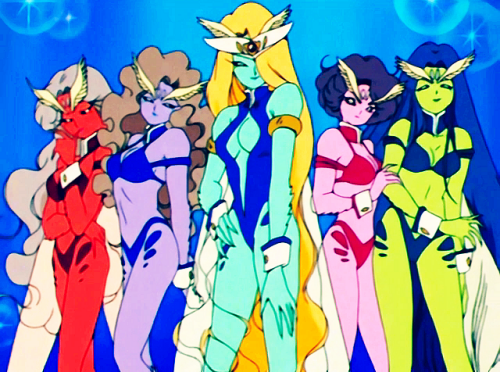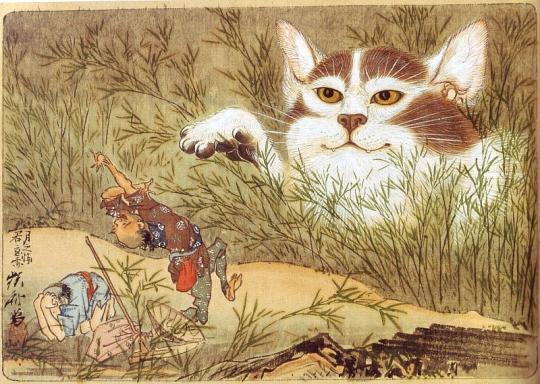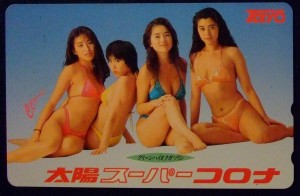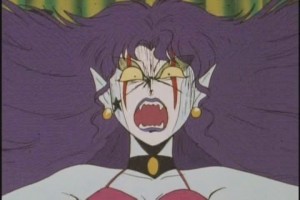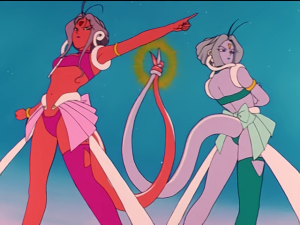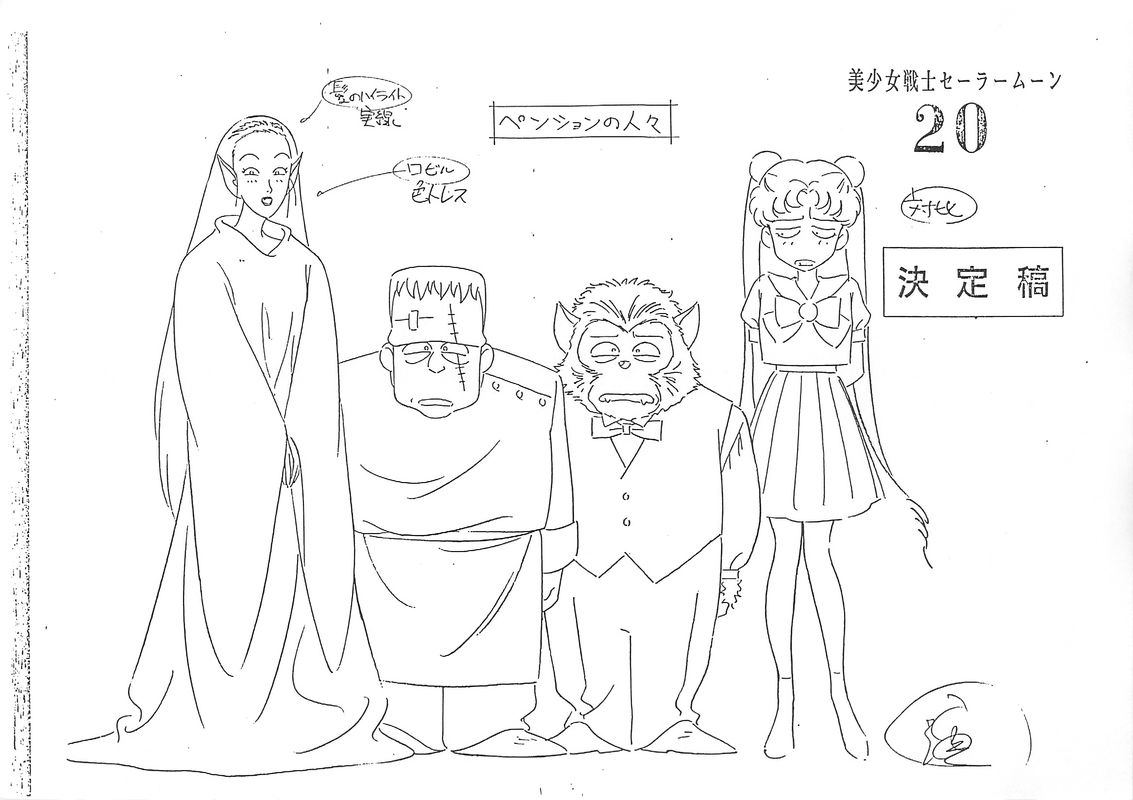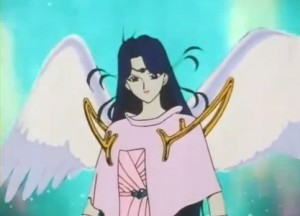Due to the very nature of the names of the planets and their connections to astrology, it’s fairly obvious why Ms. Takeuchi and the directors of the Sailor Moon anime used a lot of Greco-Roman mythology in the creation of the characters and universe. That’s why it comes as a bit of surprise that suddenly they would take a turn to an interesting mix of Christian, in the form of the Holy Grail,1 and Japanese, in the form of the three talismans, when creating the story behind the Death Busters story arc. Though the story of the Holy Grail is pretty well known in the west (indeed, there’s even a popular comedy2 written about it), the story behind the three talismans is much less well known. So what exactly are they, and how do they tie into the story?
Tag Archives: Names
How Did Ail and An’s Cardians Get Their Names?
While the whole Monster of the Day (MotD) concept is one of the more memorable aspects of the battles the Sailor Team take part in during their various adventures, it’s easy to forget that this was really more of an invention of the anime than anything else. This is, of course, all doubly true when it comes to the Cardian Arc of Sailor Moon R since… well… there was no corresponding story line in the manga. While in Ms. Takeuchi’s manga, many of the MotD (be they youma, droids, or otherwise) actually went unnamed since they were one-off, throwaway characters, fortunately for us it seems that the anime had a penchant for creatively (generally pun-related) names. As with the youma of the Dark Kingdom, Ail and An’s Cardians don’t disappoint with their names. Let’s take a look at where they came from!
The Cardians
It probably goes without saying, but the name “Cardian” itself is a play off of both “card” and “guardian,” though the idea of them being guardians is a bit ironic when you think about the fact that they exist to help Ail and An steal energy from humans and fight against the Sailor Soldiers. However, it you look at it from Ail and An’s point of view, I suppose you could easily consider them to be guardians of sorts! Individually, though, is where it gets interesting.
- Vampir: Due to her sucking energy (from our favorite victim, Naru!) for the Doom Tree (Makaiju), it’s pretty obvious that she got her name from the English word “vampire,” though the plant connection seems to just have been added in without any relation to the name.
- As an interesting bit of trivia, Vampir was voiced by no other than Megumi Ogata, the same voice actress who voiced Haruka Tenoh!
- Minotauron: Based obviously in both design and abilities on the Minotaur1 of Greek mythology. As for the “~ron” part of the name? This appears to be related to an obscure French term for a cut of beef between the neck and the shoulder, talon.2 You may also recognize this name from Talon, the owner of Lon Lon Ranch3 in Legend of Zelda: Ocarina of Time and beyond.
- Phalion: You’ll often see the name of this character romanized with an f (rather than a ph), but considering the character’s design appears to be based on that of a sphinx (note that this is not the Sphinx, but a sphinx – a monster in Greek mythology said to be made up of a lion’s body and a female head)4 I think that the beginning part of the name, the “Pha / Fa,” is actually a word play with Pharaoh (which is written similarly in Japanese), hence the spelling.
- Hell Ant: This is one of those Cardians that, to an English speaker, is pretty straight forward. She’s basically an ant. From hell.
- Leshy: This is another name that you’re likely to see written differently on the web, usually as “Reci.” The Japanese spelling is an exact match with the Japanese spelling for Leshy,5 a spirit of the woods from Russian fairy tales. Considering the mythological basis for the rest of the characters and that she attacks during cherry blossom season (and from a tree, no less), this seems like a more proper connection.
- Gigaros: The name is a play on both the Greek word giga– meaning huge6 and the Japanese name for Icarus.7
- Amaderasu: Continuing our mythological theme, this time the reference goes back into Japanese mythology, as this monster is pretty clearly named after Amaterasu,10 one of the first gods in the Shinto religion and the goddess of the sun. Her name may also be a play off of Amadeus, since they’re spelled so similarly in Japanese.
- Seiren: This Cardian’s name is a pretty clear connection to the Siren11 of Greek mythology. The sei part of the name, though, may be a pun in reference to the Japanese kanji for “voice” – 声 – which can be read as sei.
- Utonberino: One of those names that absolutely doesn’t localize well, this is the Japanese word for a traditional boxed lunch, 海苔弁当 (noribentou; nori boxed lunch)12 written backwards. This is obviously where the character design comes from. It’s not exactly apparent in English, but when you break it up as no-ri be-n-to-u and u-to-n-be ri-no, you can see it easier.
- Bipierrot: Named after pierrot,13 a mime of sorts in traditional French theater and the Japanese word for clown, the connection is pretty obvious. As for where the bi part of the name comes from, my best guess is that it’s the same as the one used in used in Pretty Soldier Sailor Moon (美少女戦士セーラームーン; bishoujo senshi se-ra-mu-n), since bi here means “pretty” or “beautiful” and often is used for female-related words.
- Amanju: Once again we go back to Japanese folklore for inspiration, this time to the amanojaku,17 a demon which is said to provoke one’s darkest desires. This would explain the connection with reading everyone’s minds, though judging by the horns and all, the design seems to be based off of a standard Japanese oni.18
- Yamandakka: While the appearance is obvious – an Asura19 from Buddhist mythology – the basis for her name is a bit of a mystery to me. The best possible answer I’ve been able to come up with is that it’s a play on the Japanese term for Asura which are depicted with three faces and six arms, a design known as 三面六臂 (sanmenroppi).20 If you were to yaman could be an altered reading of 四面 (four faces) and 足花 (legs, flower; read as da and ka respectively).
And there you have it! Once again, the various animators, directors, and all the staff who worked on the Sailor Moon anime don’t disappoint when it comes to making creative and interesting character names. Though some of them are a bit obvious to native English speakers, like the Ail, An, and Fiore connections, it’s nice to see all of the different mythologies tied together. And who would have known that a wrestling star would be the inspiration for a character!
What Is the Shared Mythology Between Luna, Artemis, and Diana?
Of course we already know that Luna, Artemis, and Diana are connected through their familial connection, so there isn’t much of a mystery there. What is interesting about this connection, however, is that though Ms. Takeuchi may have recycled the name of Diana, she made a wonderful choice by choosing that as the name for Luna and Artemis’ adorable daughter.
Most people are probably aware of the connection between Luna’s name and the Moon, especially speakers of English and the romance languages, since the name has been been reappropriated for many moon-related terms in astronomy, events, and phenomena (e.g., lunar eclipse, lunar calendar, lunar tides, etc.). The source of this name, like many names associated with the planets and stars, is Roman mythology. The Roman goddess Luna1 is the goddess of the moon, corresponding to the Greek goddess Selene.2 Interestingly enough, this shows a nice, clear tie between Usagi — Princess Serenity — and Luna, which really shows up in the interplay between the pair.
What about Artemis, then? Well, sorry to say to the gruff, male assistant to the sailor-suited soldier, Sailor V, Artemis was also a goddess, this time of the Greek variety.3 It’s not all bad for poor Artemis (the cat!) though; the goddess he’s modeled after was known for her prowess as a hunter and was often depicted with a bow and arrow and was known as the protector of young girls, which fits in well with his position as confidant, advisor, and assistant to Minako.
The question of the day, then, is who is Diana, and how are Luna and Artemis connected to her?
Interestingly enough, Diana is also a Roman goddess of the moon.4 More specifically, she is the Roman counterpart to Artemis, known originally as a goddess of hunting (once again, like Artemis, many of her appearances in art depicted her with bows, arrows, and hunted beasts). Later, she became more widely known as the goddess of the moon, eventually coming to replace Luna in that role in Roman mythology. Indeed, Luna eventually came to be known as an epithet5 — a descriptive name, of sorts — for the goddess Diana. Ultimately, Diana is both Artemis and Luna, making the name a wonderful choice for the daughter of the two feline guardians.
One final little bit of trivia: the Romanian word for fairy, ZẤNĂ,6 is said to have come from the name Diana. That helps explain the moon fairy connection in her original incarnation!
What Do Queen Serenity and Queen Metalia Have in Common?
Whether you look at the anime or manga or even the live-action series, despite how important they were to setting up the story behind the Sailor Moon series, Queen Serenity and Queen Metalia both get incredibly minor roles with very little explained about their past or motivations. What’s worse, the Serenity name is passed onto her daughter, Princess Serenity, who then passes it on to her daughter, Princess Usagi Small Lady Serenity. But is there more to these characters than meets the eye? I think so, and that’s what we’re here to look into!
Queen Serenity
Starting with the Serenity line, it’s fortunately pretty easy to track down the meaning and history behind her name, though most of it is probably connected more to Princess Serenity / Usagi more-so than her mother. The most obvious and meaningful connection is the Greek myth of the relationship between Selene, the moon goddess, and the mortal Endymion.1 This gets us partly to the name “Serenity,” though we have one (or possibly two!) other sources of inspiration, all inspired by the Greek connection to the moon.
We all know that Ms. Takeuchi had a strong attachment to astronomy during her developmental years and did a lot of research when making the series, so it should come as no surprise that Usagi’s royal name would be connected to a basin on the Moon, the Mare Serenitatis — or, in English, the Sea of Serenity.2 This is also, incidentally, where the Moon Kingdom was said to be located and where the Sailor Team head in both the anime and manga to consult with the memory of Queen Serenity among the ruins of the Silver Millenium.
So then, what is this third possible reference? Though less of a connection to the late Queen Serenity herself, there seems to be a strong implied connection between Neo-Queen Serenity, Crystal Tokyo, and the mineral known as selenite.3 Selenite is most often clear, though can appear white, pearl, or a variety of other colors depending on impurities. Most notably, it often is found in columns and in tubular designs, not much unlike the designs of the Crystal Tokyo Palace and the Silver Crystal.
Queen Metalia
Like the Four Kings, the connections to geology are a lot more obvious with the Dark Kingdom. There are two notes about the dual monarchy — Queen Beryl and Queen Metalia — that are not obvious at first glance, however. First off, while the most obvious connection with Queen Beryl is to the gemstone beryl.4 However, it’s a little more complicated than that. You see, the Japanese word for queen is 王女 (oujo; queen) though Ms. Takeuchi tends to write the titles (e.g., princess, queen, etc.) out phonetically, such as クイーン (kui-n; queen). However, the titles for both Queen Beryl and Queen Metalia are misspelled in Japanese, and are written as クイン (kuin; no meaning). Why is that?
Well, it’s to give it a double meaning. While it still sounds reasonably close to queen (and is treated canonically that way), it also looks similar to クリソ (kuriso; chryso). So actually, Queen Beryl’s name is more strongly connected to chrysoberyl.5 Just by looking, you can see that this stone much more closely matches the color scheme associated with Queen Beryl, so it’s pretty clear that this is more likely a closer source for her inspiration than normal beryl.
That means that the chryso- connection probably also remains true for Queen Metalia as well, since her name is also written in the same (misspelled) manner. Since here’s no substance known as metalia, we can rule out any special connection there other than it simply being a reference to metal, but with the chryso- prefix attached,6 it modifies the meaning to the metal, gold.
What that ultimately leaves us with is the villain, an evil queen born of hatred from the sun and named in honor of the mineral gold fighting against the Silver Millenium, ruled by the queen of the moon.
Though we never did learn as much about the motivations behind Beryl, Metalia, and the formation of the Dark Kingdom (outside of the musical, of course!) as I would have liked, it’s nice to know that Ms. Takeuchi went through quite a bit of effort to put a little more detail into their names than you’d initially assume. I have to admit, she’s pretty tricky!
How Did the Youma of the Dark Kingdom Get Their Names? (Part 2)
Now we move onto the latter half of the first season of Sailor Moon and onto the youma serving under Zoisite. What’s interesting about this is that though we were generally granted our usual “one monster of the day” to meet the quota, for the most part these youma didn’t actually serve under Zoisite, but rather belonged to the Seven Great Youma, which had existed since the time of the Silver Millennium and were simply uncovered by Zoisite or the Sailor Team. Also rarely noted is that Queen Beryl herself also has youma which report directly to her, though to be honest, the structure of the Dark Kingdom is a bit hard to follow in the first place. Anyway, as we did in Part 1, let’s take a look at how the youma of the Dark Kingdom got their names!
Zoisite
- Yasha: This is the Japanese word for Yaksha,1 a natural spirit appearing in Hindu, Jain, and Buddhist texts. The meaning behind the face mask and the monster form is in reference to the female and male yakshas, which were portrayed respectively as beautiful with round faces and attractive figures, or as fearsome warriors.
- You may recognize this name as being similar to the character Inuyasha, from the series with the same name. This is the same yasha being referenced.
- Grape, Suzuran, and Housenka: Often referred to by Western fans as the “Plant Sisters,” though in the Japanese version they’ve been given no name other than the “Three Youma Girls.” Their names are clever plays off of flowers, but by using different kanji also spell out the names of their attacks, though unfortunately I can’t find any sort of deeper meaning behind Grape. As for the other two:
- Suzuran when written as 鈴蘭 (suzuran) means “lily of the valley,” but by using a clever word play could be written as 鈴乱 (suzuran) which means something akin to “bell disturbance” (harmonic disorder?). Her attack name is 鈴乱れの音 (suzumidare no oto), meaning something like “Sonic Disrupting Screech!”
- Housenka when written as 鳳仙花 (housenka) means a garden balsam, but the first part of her name can also be written as 砲戦 (housen), which is an artillery barrage. This is likely in reference to the fireballs she shoots.
- Akan: This is a mix of the Japanese word あかん (akan) meaning bad, wrong, or something you shouldn’t be doing.2 Also, あか (aka) can also mean red, which explains the color.
- As an interesting bit of trivia, this is the only time which any of the Four Kings other than Kunzite turns a normal human into a youma.
Seven Great Youma
- Gesen: A direct reference to the Japanese word for arcade — ゲームセンター (game center), often abbreviated as ゲーセン (gesen).
- Boxy: A Japanese pun which plays on both “boxer,” and the Japanese word for priest, 牧師 (bokushi).
- Bunbo: Seeing as this youma was reincarnated as Ryo Urawa, one of the few characters to nearly match Ami in intelligence, and he’s themed after stationary supplies, his name — based on the Japanese word 文房具 (bunbougu; stationary supplies) — makes sense!
- Binah: This is likely in reference to Binah,3 one of the ten Sephirah,4 which are considered to be the revelations of the Creator’s Will.
- Rikoukeidar: The name is a play on the Japanese term 理工系 (rikoukei) for a person who is considered more logical (rather than artistic) or what we’d consider a science type. Makes sense considering the type of school Reika went to!
- Jiji: This name is a double pun, based on the slang used to refer to an old man じじ (jiji; derived from おじさん, ojisan) and 獅子 (shishi), the basis for two 狛犬 (komainu) which appear outside Shinto shrines.5
- Bakene: A play off of 化け猫 (bakeneko),6 one of the youkai, or ghosts/spirits, of Japanese legends.
Kunzite
- Mitsuami: A direct reference to the Japanese word 三つ編み (mitsuami) meaning hair braided from three strands.
- Shakoukai: A double pun playing on the term 社交界 (shakoukai) meaning social circle and 貝 (kai) meaning shellfish.
- Blizzar: With all the hard work they put into names, I’m kinda disappointed that they went with a simple reference to blizzards here. I guess to Japanese speakers the reference isn’t so obvious, though?
- Zoyrin Geller / Doyrin Geller: The Japanese pronunciation of this name isn’t even known among Japanese fans, much less among the Western audiences. One possible explanation is that the name is in reference to Solingen (pronounced with a Z in German and in Japanese), which is known as the City of Blades,7 which may be in reference to the ice skates.
- As a bit of trivia, Janelyn (the female member of the pair) is a reference to Janet Lynn,8 an Olympic American figure skater.
- Papillon: From the French word for butterfly.
- Oniwabandana: A reference to the 御庭番 (oniwaban),9 secret agents serving under the Tokugawa government as spies and security guards. The second half of the name is also a play on bandana.
Queen Beryl
- Thetis: A clear reference to the sea nymph of Greek mythology of the same name.10
- One interesting thing about Thetis is that she’s one of the few youma who actually shows much personality and even interacts within the Dark Kingdom. She also was one of the strongest to appear until the Seven Great Youma.
- DD Girls: Unfortunately, none of the individual team members have their own name, but rather are just known by their color. However, the group’s name is a reference to the Japanese all-girl pop group C.C. Girls,11 and mixed in with the reference to the D-Point, where the final battle took place.
And there you have it, an in-depth look into the names of all of the youma as they appeared in the first season of Sailor Moon! I gotta admit it was a bit exhausting, but I’m happy to see that the producers of this series went so far out of their way to put so many hidden meanings in these one-shot enemies. Who’d have known!
[(1-20-2015) Edited to add: Thanks for the catch on Boxy and 牧師 goes to Sailormoon Canada on Twitter!]
How Did the Youma of the Dark Kingdom Get Their Names? (Part 1)
One of the many recurring themes that we keep touching on over and over in the world of Sailor Moon is the significance of names, and the minions of the Dark Kingdom are no different. The majority of their names are either directly related to the specific youma’s power, appearance, or the main character of the day in the episode, but quite a few of them actually have a surprising backstory behind them! So, without further ado, let’s take a look at the names of the youma as they appeared in the first season, separated by who they served under.
Jadeite
- Morga: This is a hard one since there’s really no direct links in Japanese or English to her name, but judging by her appearance, the ga part of her name is likely in reference to 餓 (ga), meaning “to starve.” She also remarks in the manga that Naru’s mother is likely starving to death and locked up.
- Speaking of the manga, she’s one of the few “monsters of the day” who appeared in both the manga and the anime throughout the entirety of the Sailor Moon series, though she didn’t have a name in the manga.
- Balm: A clever play off of the word “palm,” in reference to palm reading and, more generally, fortune telling.
- Frau: Many people claim this is a play off of the Japanese word 振る (furu; to dump), but that doesn’t make sense in this context. Most likely it’s a play off of “flower,” in reference to the broaches given away that sap listerners’ energy.
- Iguara: A pretty clear reference to an iguana, due to the pet shop which was opened and the design of the enemy.
- As an aside, he cute animals that smell all-so-nice in this episode, chanela, are an obvious reference to Chanel, the brand of perfume.
- Kyurene: Spelled the same in Japanese as Cyrene/Kyrene of Greek mythology, a strong and aggressive female hunter.1
- Derella: Derived from a shortening of Cinderella.
- Garoben: A play off of the Japanese term ガリ勉 (gariben) meaning to be fanatic about studying,2 and probably in reference to all the students and how hard they were studying (and as a result, having their energy taken from them).
- Ramua: An anagram of the Japanese word for “alarm” (as in, alarm clock). A – Ra – Mu = Ra – Mu – A
- Kigaan: A play off of the Japanese word 祈願 (kigan) meaning prayer,3 which is typically offered up at a Shinto shrine.
- Murid: “Dream” written backwards in Japanese. Do – Ri – Mu = Mu – Ri – Do
Nephrite
- Tesuni: An anagram of the Japanese word for “tennis.” Te – Ni – Su = Te – Su – Ni
- Petasos: This is likely in reference to the ancient Greek hat known by the same name, petasos, in reference to the hat which Nephrite uses to syphon energy.4
- Widow: Pretty obviously in reference to the black widow spider.
- Kyameran: Could be interpreted either as: (i) An “n” added to the Japanese word for camera, or (ii) a contraction of “camera” and “man” to become Cameran.
- Jumeau: In reference to the Bisque dolls5 which were popular in the late 1800s. A French company, Jumeau,6 was one of the most famous manufacturers.
- Regulus: Direct reference to the star, Regulus.
- Castor and Pollux: In reference to the stars and the characters by the same name in Roman mythology.7
- As an interesting aside, it’s said that the models for two of the staff at the animation studio appearing in this episode, Hiromi Matsuno and Kazuko Tadashita, are none other than Hiromi Matsushita and Kazuko Tadano (husband and wife character designers and animators working at Studio Live on producing Sailor Moon episodes at the time)8
This takes us all the way through the first half of the original season of Sailor Moon, but it’s already getting pretty long, so I think we’ll need to hold off for part two until the next time around. Next up, we’ll be taking a look at the youma which service under Zoisite and Kunzite, along with the Seven Great Youma themselves and those that served directly under Queen Beryl. There’s plenty of more trivia to be found!
How Did the Youma Used by the Four Kings Differ?
While it’s pretty well known that the way each of the Four Kings of the Dark Kingdom went about their job was different (as well as the objectives assigned to them by Queen Beryl), one of the interesting “blink and you’ll miss it” facts about this arc is that the youma1 who served under them were also different. I’d like to also go into how each of their names were also unique/relevant to the episode that they appeared in, but we’ll need to go into that sometime later due to the sheer volume of names we’d have to look at. So for now, let’s take a look at how the youma under each of the Four Kings differed!
Jadeite
In nearly all of the Jadeite episodes, there was generally some sort of transformation taking place, usually in the form of either Jadeite himself or the youma he dispatched dressing up and pretending to be a human. In the first episode, for example, Morga had abducted Naru’s mother and pretended to be her for at least several days. Though it’s unclear how long Naru’s mother was abducted, we do know that jewelry sales were going on for several days and in the manga she remarks that Naru’s mother is dying of starvation as they speak.2 Though it’s not always clear if they take the place of specific humans or sometimes simply make up an identity, this is the running theme throughout the Jadeite arc. Not one to miss out on the cosplay action, Jadeite himself also gets involved in multiple episodes: 3 (as a radio DJ), 10 (bus driver), and 11 (security guard) off the top of my head.
Nephrite
Nephrite is somewhat unique in that he gets involved more directly than the other Kings. However, the youma that he oversaw typically differed with those from Jadeite’s in that they rarely (if ever?) would actually transform into or pretend to be humans, but rather would possess Nephrite’s target as identified through his fortune-telling or something that belonged to and was important to them in order to steal their energy. Tesni and the tennis racket, Widou and the cloth, and Kyameran and the camera are all good examples of this. There is one exception to this rule, though, in episode 19 with Neprite Kamen, but I guess he just wanted a chance to be in the lime light!
Zoisite
Zoisite’s case is a bit different, since the majority of the youma working under (with?) him can’t even be said to be serving under him at all in the first place. However, nearly all of those that appear in this arc are one of the Seven Great Youma, each tied to one of the seven Rainbow Crystal shards and being reincarnated as humans. They were said to have been the strongest of Queen Beryl’s minions, so it’s possible that several millennia they served under Zoisite, but that’s unclear.
So anyway, the youma in this arc are unique in that they are all monsters reborn as humans, which has imbued their human form with special powers. Their youma form typically assumes a trait of the person they inhabited.
That’s not always the case, however, as seen in episodes 23 and 24, with Yasha and the three youma Zoisite sent to kill Nephrite. Unfortunately, with so few examples, we can’t really find a common theme between them.
Kunzite
Kunzite’s situation is interesting in that it’s basically the opposite of what Jadeite did: rather than have youma take the place of (or pretend to be) a human, he simply turned a human into a youma to cause them to do his dirty work. Though it’s not clear (and never really explained in the series) if he causes a youma working under him to possess the human and Sailor Moon uses the power of the Silver Crystal to destroy it or if he simply imbues the human with powers which causes them to become a youma, which Sailor Moon cleanses from them. My guess is the latter, since they still seem to have human emotions and maintain their relationships, as is the case with Janelyn and Misha in episode 39.
For something so minor and that could’ve easily devolved into a “monster of the day” segment, I’m personally glad that the anime producers went so far out of their way as to treat all of the Four Kings differently. Not only were their tasks different, but the way they went after their tasks were also sufficiently different and definitely kept the series interesting through the whole season!
